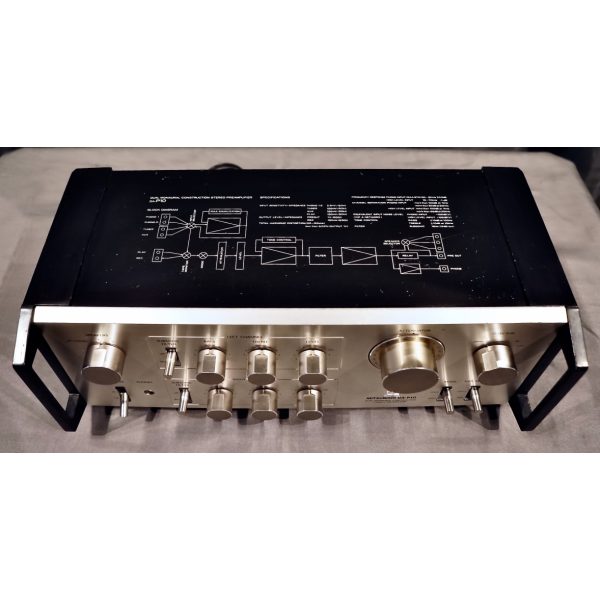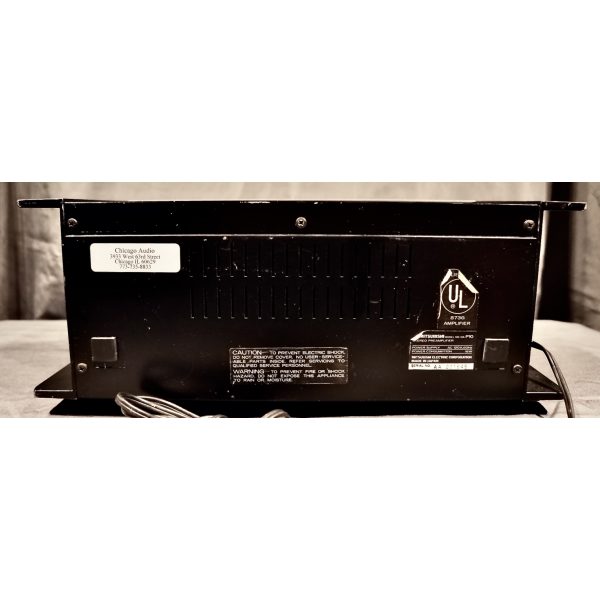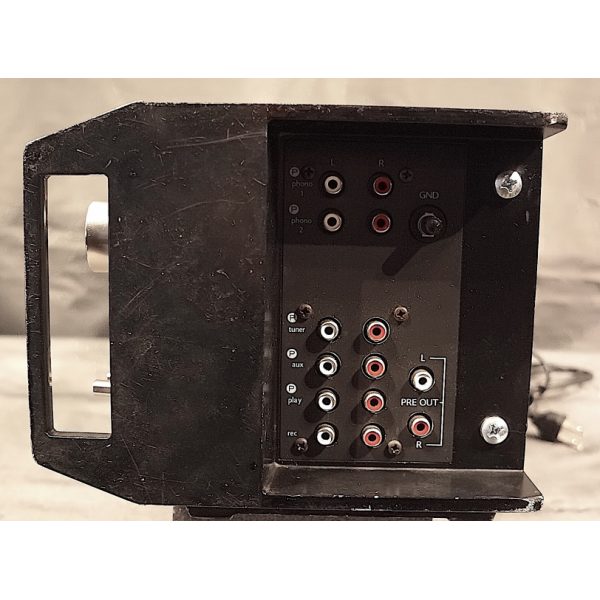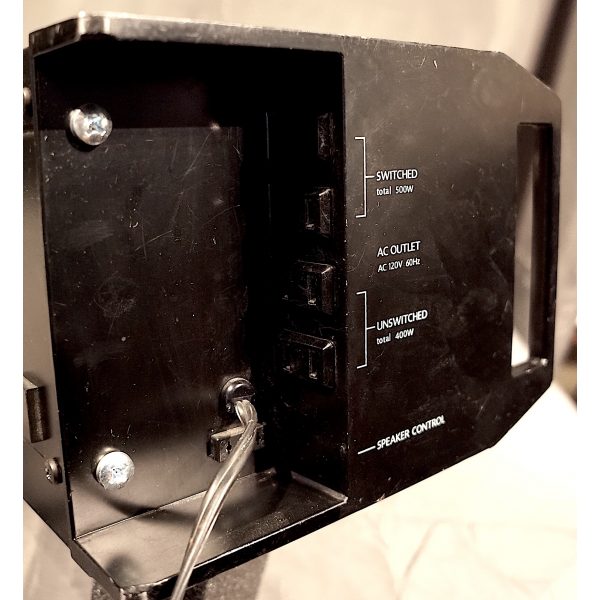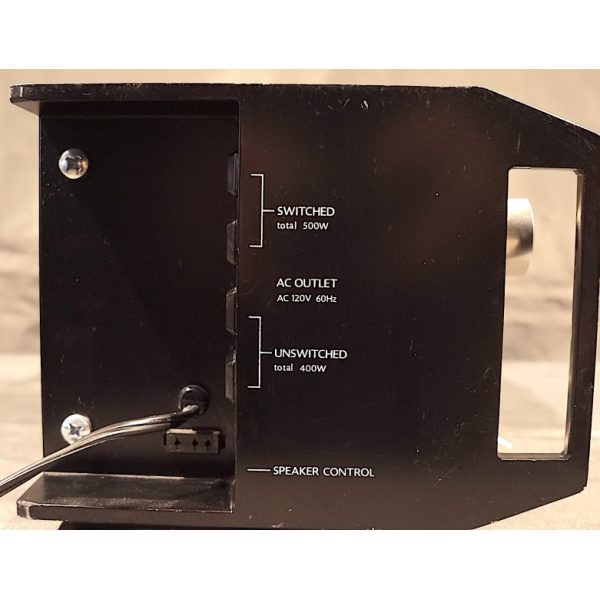Mitsubishi DA-P10
Dual Monaural Construction Stereo Preamplifier
All pre-owned product is tested in our service department and have been passed for sale... and comes with a 90 day warranty!
This is in good condition. Cabinet has seen a some wear, but unit still works great! Original box and packing are NOT included, but we will pack carefully. Circa mid 1970's
Techie stuff from the original brochure: TWO HIGH PERFORMANCE PREAMPLIFIERS FOR THE PRICE OF ONE:
Mitsubishi gives you two, completely separate amplifiers - Known as DUAL MONAURAL construction, this means that two perfectly matched monaural amplifiers keep the two channels completely separate, with the equalizer, tone controls, filters, and ground connections separately mounted on a single chassis. The DA -P10 offers the added advantage of separate power supplies for left and right channels. Power requirements are supplied from two separate windings on the power transformer, separately rectified, and smoothed by extra large, separate capacitors. This, too. assists in audio quality, ensuring that high-level output peaks do not strain the power supplies nor degrade quality.
The dynamic range of an amplifier is the full range of signal levels, from the lowest that will not be lost in the background noise level, to the highest that can be reproduced before distortion rises unacceptably. These factors are largely influenced, for disc reproduction, by the equalizer section.The ultra low-noise transistors used in the equalizer first stage were specially developed by Mitsubishi for this critical application. The differential amplifier configuration used ensures optimum stability with high gain and reduces overall noise levels,
The accuracy of the RIAA equalizer Is demonstrated by the fidelity with which the complex pulse-plus-sinewave transient response is reproduced. The original waveform was first subject to RIAA pre-emphasis (like the signal from a recorded disc), and then passed through the DA-P10 equalizer section, which precisely recreated the original signal. However complex the waveform, including step-like transients, the response will be crisp, clean, and true.
Tone controls are necessary, but they don't have to be a necessary evil, In other words, they don't have to add unacceptable levels of distortion. At| least, that is what Mitsubishi's engineers thought when they chose the highly sophisticated circuits used for the tone controls on the DA-P10. Extremely low distortion is assured by the use of a differential amplifier first stoge, with current-mirror load, and with common emitter connection to the following stage, using Class A amplification. The current mirror effectively cancels out much of the harmonic distortion, and Class A operation is inherently free of crossover and switching distortion. The buffer amplifier is also unusual in that inverted Darlington connection with emitter-follower coupling is used to further reduce the already low distortion figures. Although you will not see separate switches labelled 'defeat' on the DA-P10. it features tone controls with a switch. plus-variable-resistor combination that completely eliminates components with time constants from the circuit at the flat position. The result is a truly flat response, a neutral reference that forms a useful standard by which to judge whether the tone-control setting is effective or not. Note that separate tone controls are provided for the left and right channels - important if listening conditions cannot be made exactly the same for both speakers. Note too, as you use the defeat position, that there is no significant deterioration in reproduction quality with the controls in use, clear proof of the effectiveness of the design.Full Control of Inputs, Outputs, and Levels
Specs:
Frequency response: 10Hz to 70kHz
Total harmonic distortion: 0.02%
Input sensitivity: 2.2mV (MM), 150mV (line)
Signal to noise ratio: 79dB (MM), 90dB (line)
Channel separation: 80dB (MM), 85dB (line)
Output: 150mV (line), 1V (Pre out), 9V (Pre out Max)
Dimensions: 425 x 170 x 204mm
Weight: 5.8kg



